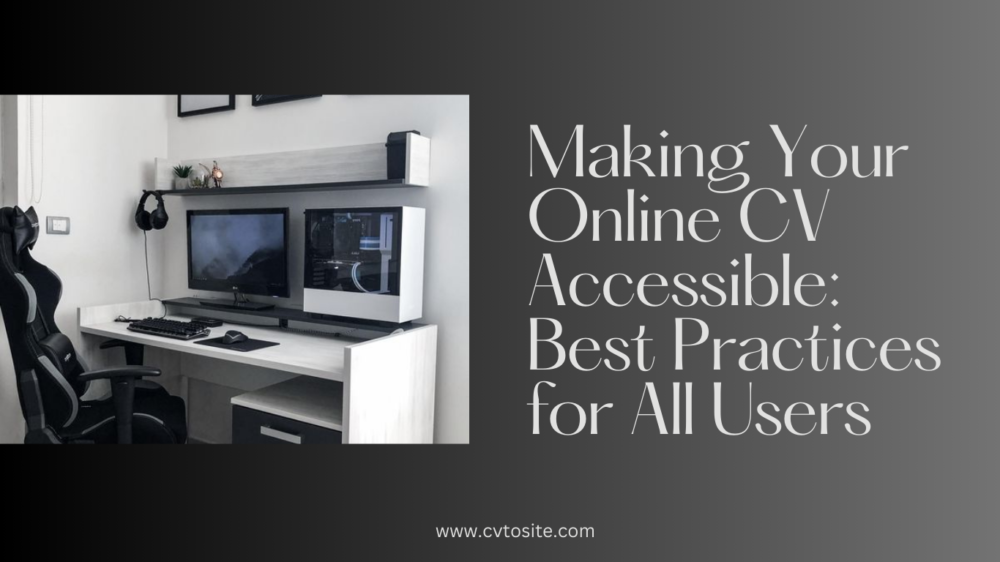In today’s competitive job market, a well-crafted Curriculum Vitae (CV) or resume is your gateway to landing your dream job. However, in our digital age, simply having a polished CV is not enough. Ensuring its accessibility for all users is equally crucial. Whether it’s a recruiter, potential employer, or someone using assistive technologies, making your online CV accessible can significantly increase your chances of standing out and making a lasting impression. Here are some best practices to ensure your CV is accessible to everyone:
- Clear and Organized Structure:
Structure your CV in a clear and organized manner. Use headings, subheadings, and bullet points to break down information logically. This makes it easier for all users, including those using screen readers, to navigate through your CV effortlessly. - Use Descriptive Headings and Alt Text:
When inserting images or charts, include descriptive alt text. This provides context to users who cannot view images and helps screen readers describe the content accurately. Similarly, use descriptive headings that succinctly summarize the sections of your CV. - Accessible Fonts and Formatting:
Choose easily readable fonts and maintain a font size of at least 12 points to ensure readability for all users. Avoid using decorative or overly stylized fonts as they can be difficult for some users to decipher. Additionally, use sufficient color contrast between text and background to aid readability. - Provide Alternative Formats:
Offer your CV in multiple formats, such as PDF and plain text. While PDFs are commonly used, they can sometimes pose accessibility challenges. Providing a plain text version ensures compatibility with various assistive technologies. - Consider Language and Clarity:
Use clear and concise language in your CV. Avoid jargon or overly complex sentences that might be challenging for some users to understand. Additionally, explain acronyms or specialized terms to ensure universal comprehension. - Test Accessibility:
Utilize online accessibility checkers or tools to assess the accessibility of your CV. These tools can highlight areas that may need improvement, such as missing alt text, poor contrast, or structural issues. - Keyboard Accessibility:
Ensure your CV is navigable using only a keyboard. Some users, especially those with motor disabilities, rely on keyboard navigation. Test your CV’s functionality without a mouse to ensure seamless navigation. - Link Accessibility:
If your CV contains links to external sources or your portfolio, ensure these links are descriptive and meaningful. Use clear anchor text that accurately represents the linked content, enhancing usability for all users. - Video and Audio Inclusion:
If you incorporate videos or audio files, provide transcripts or captions. This aids users with hearing impairments or those who prefer reading content rather than watching or listening. - Continuous Improvement:
Keep updating and refining your CV’s accessibility features based on feedback and advancements in accessibility standards. Staying proactive ensures your CV remains inclusive for all users.
In conclusion, creating an accessible online CV not only demonstrates your commitment to inclusivity but also broadens your reach to a diverse audience. By implementing these best practices, you ensure that your qualifications and experiences are effectively communicated and appreciated by everyone, regardless of their abilities or the technology they use. Striving for accessibility in your CV not only benefits others but also sets a standard for inclusivity in your professional endeavors.






